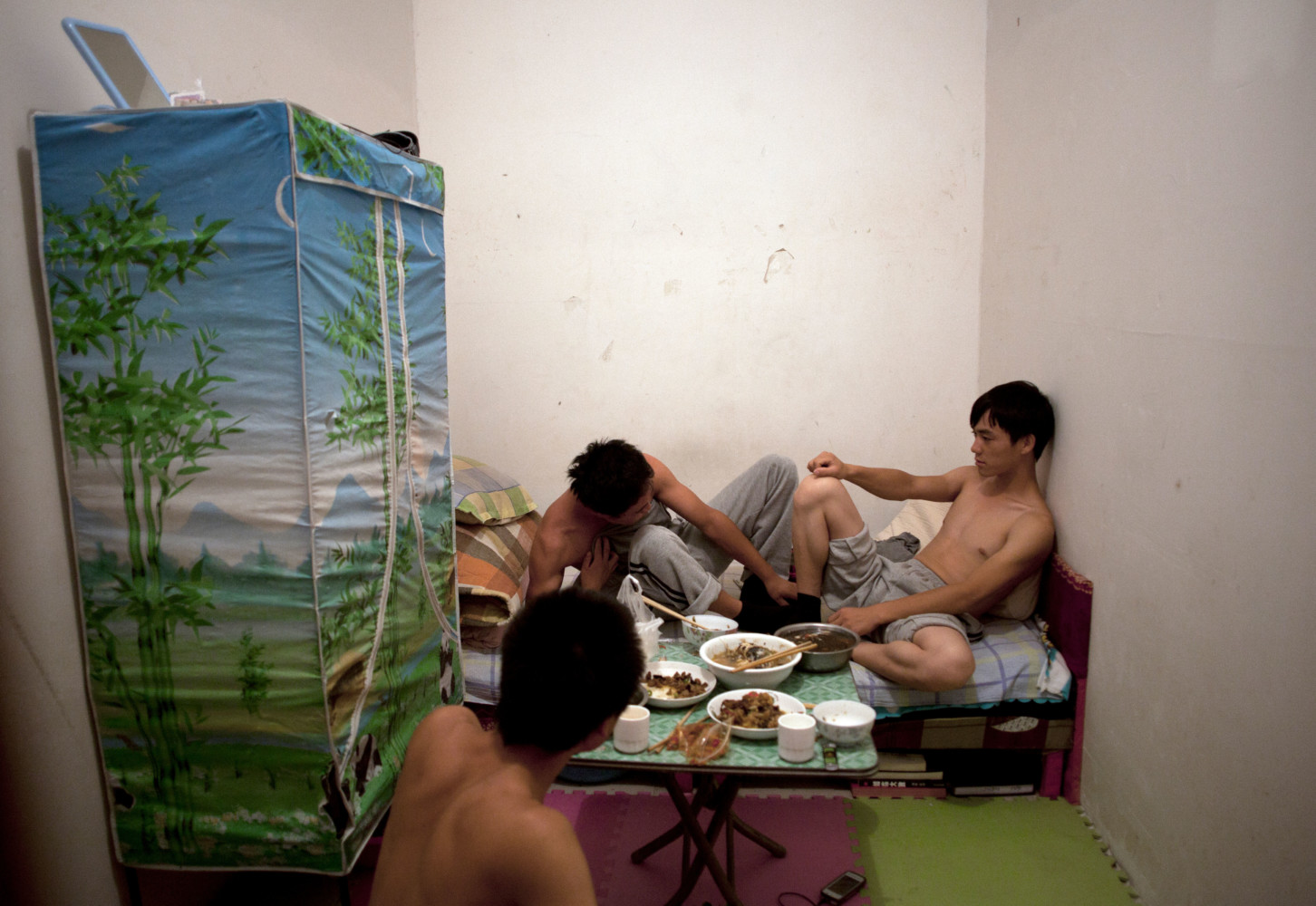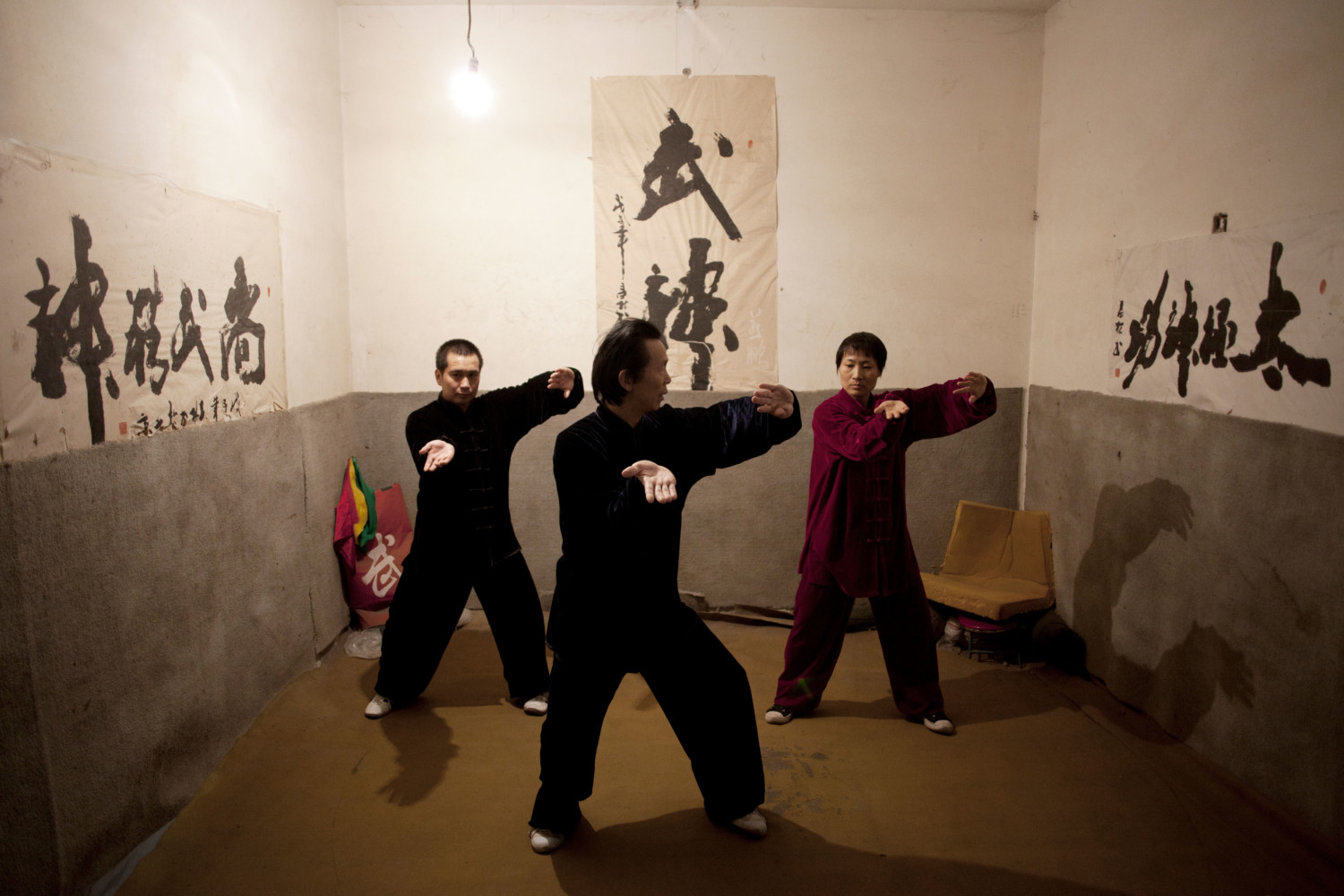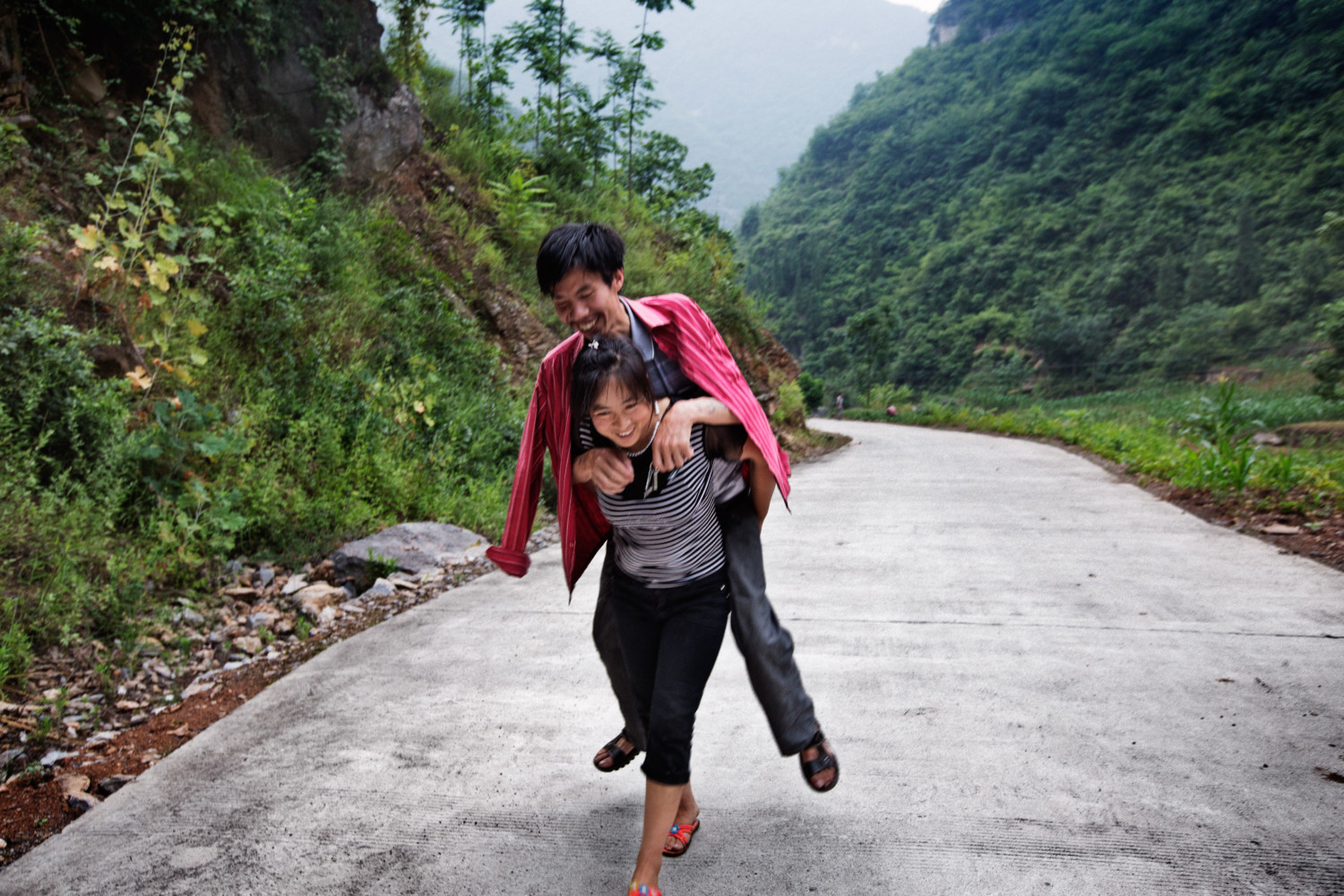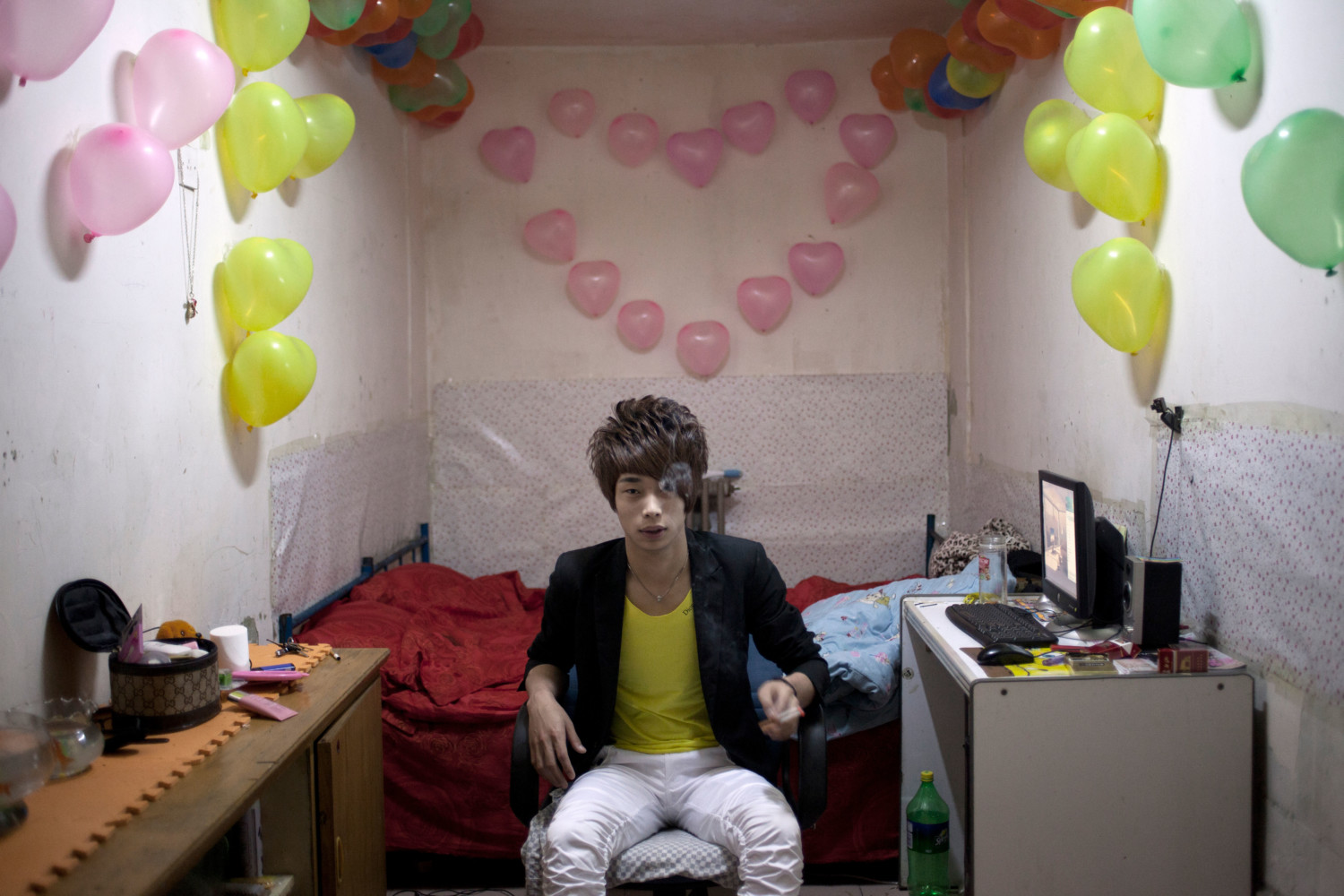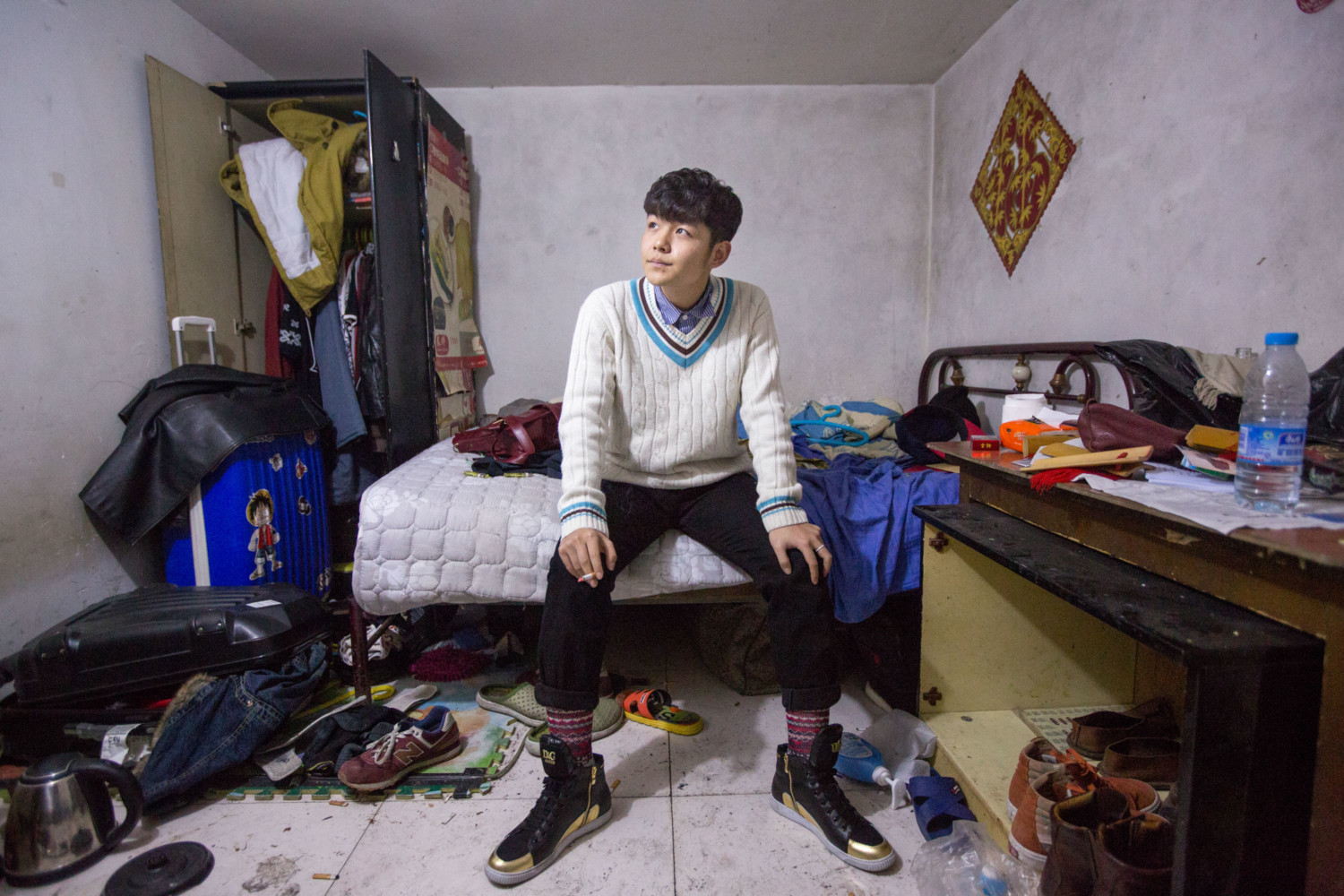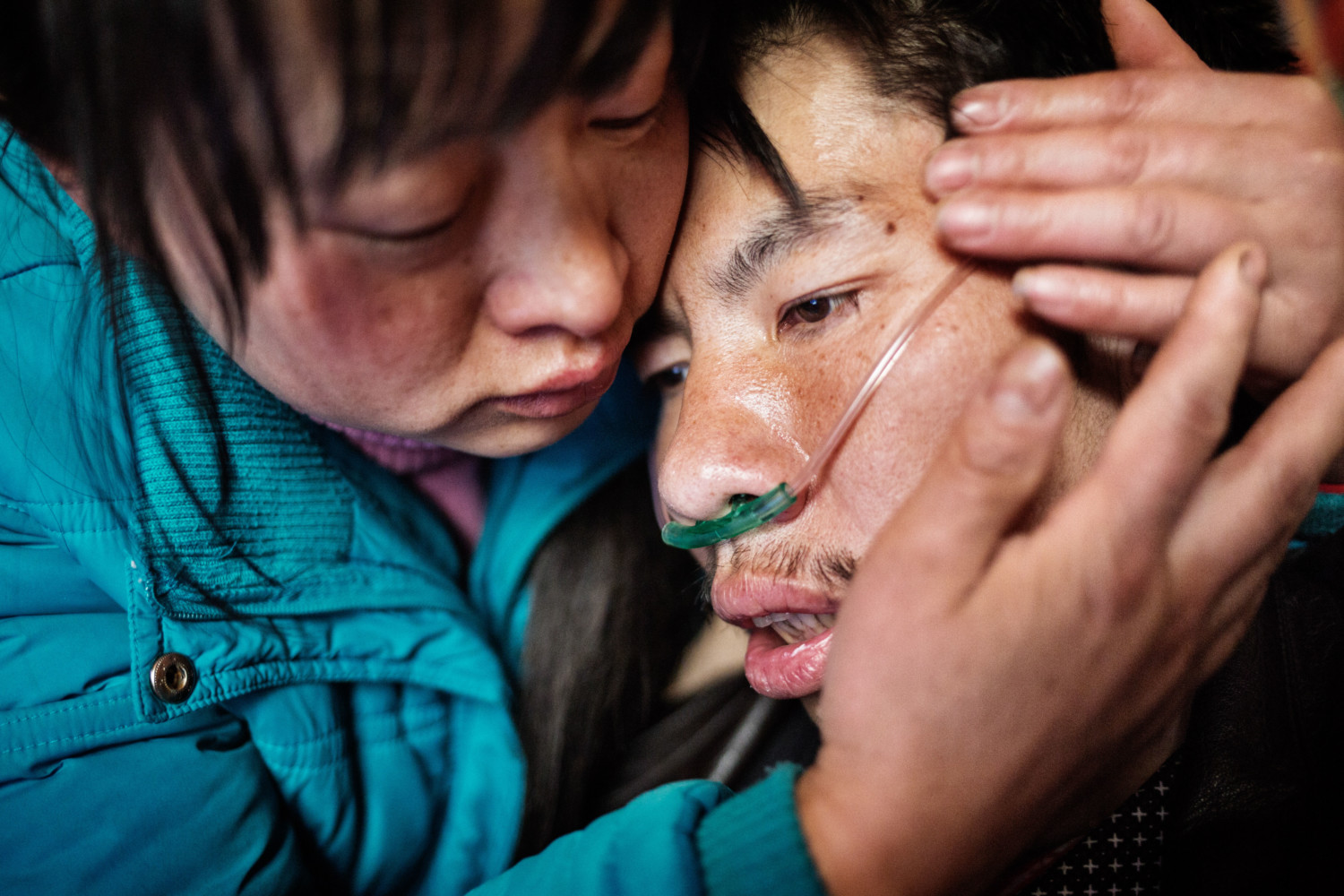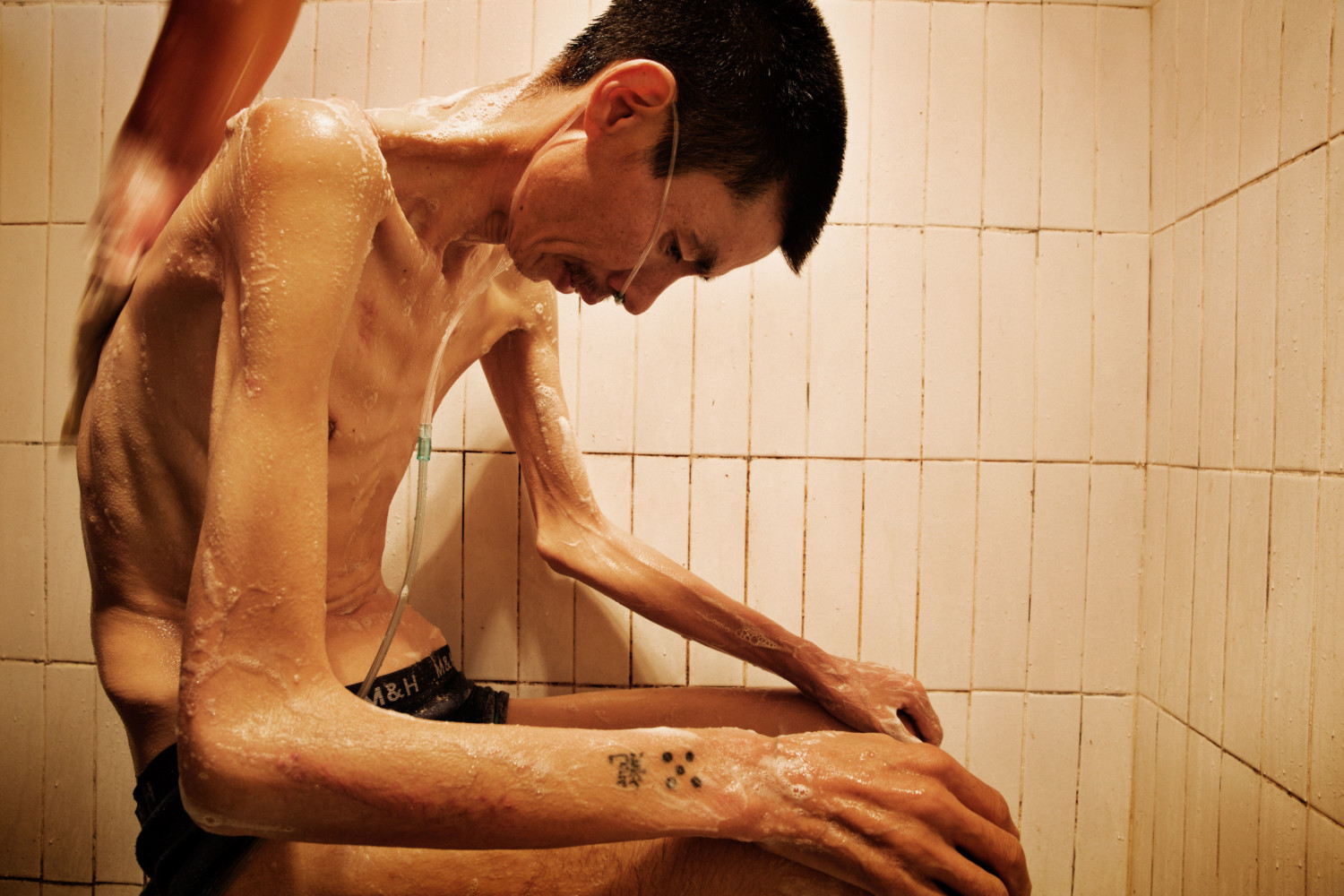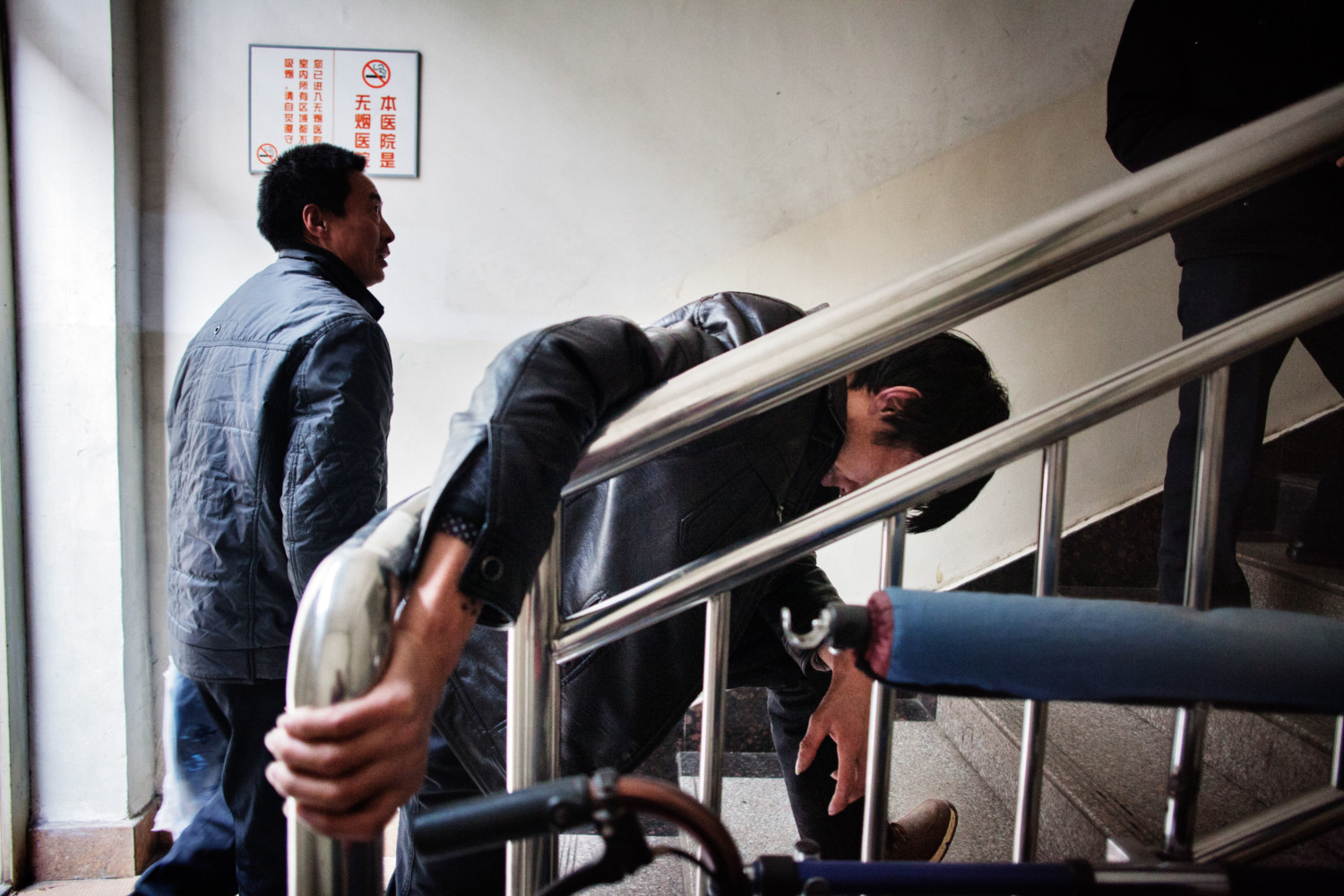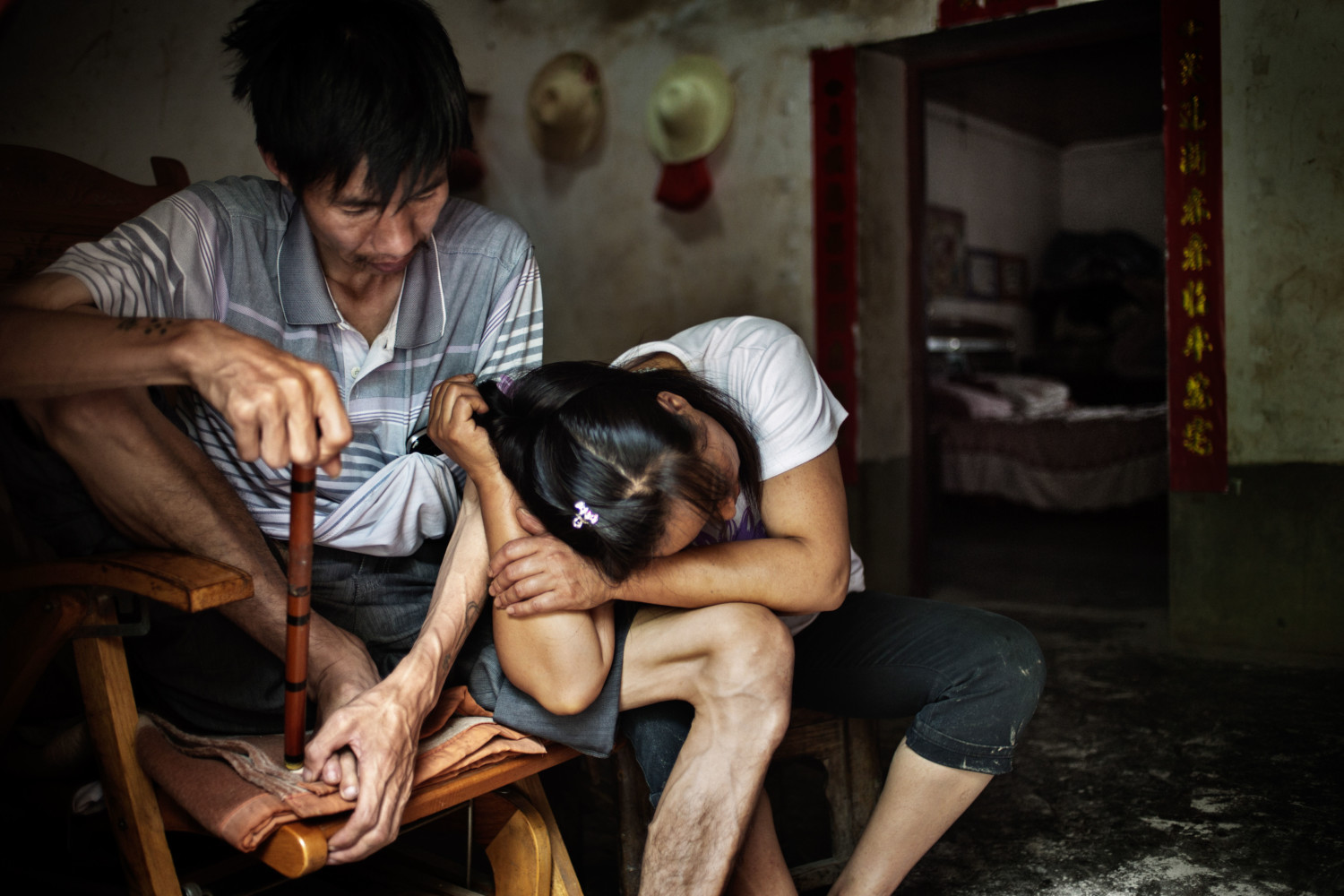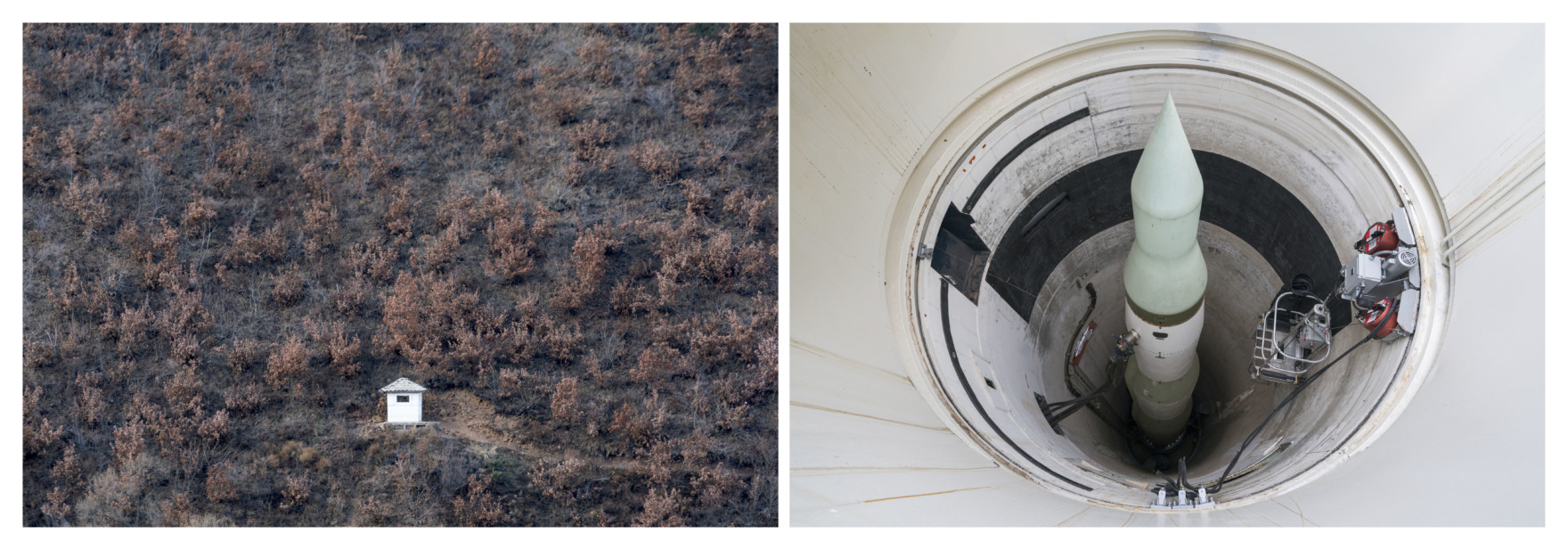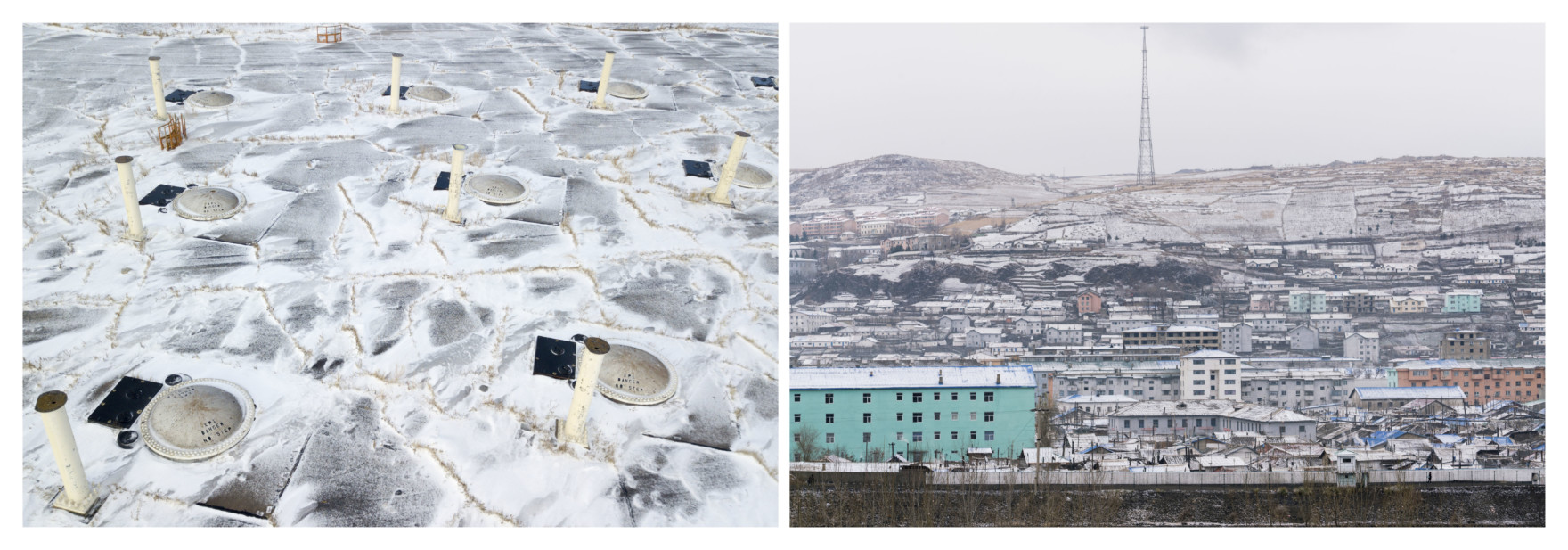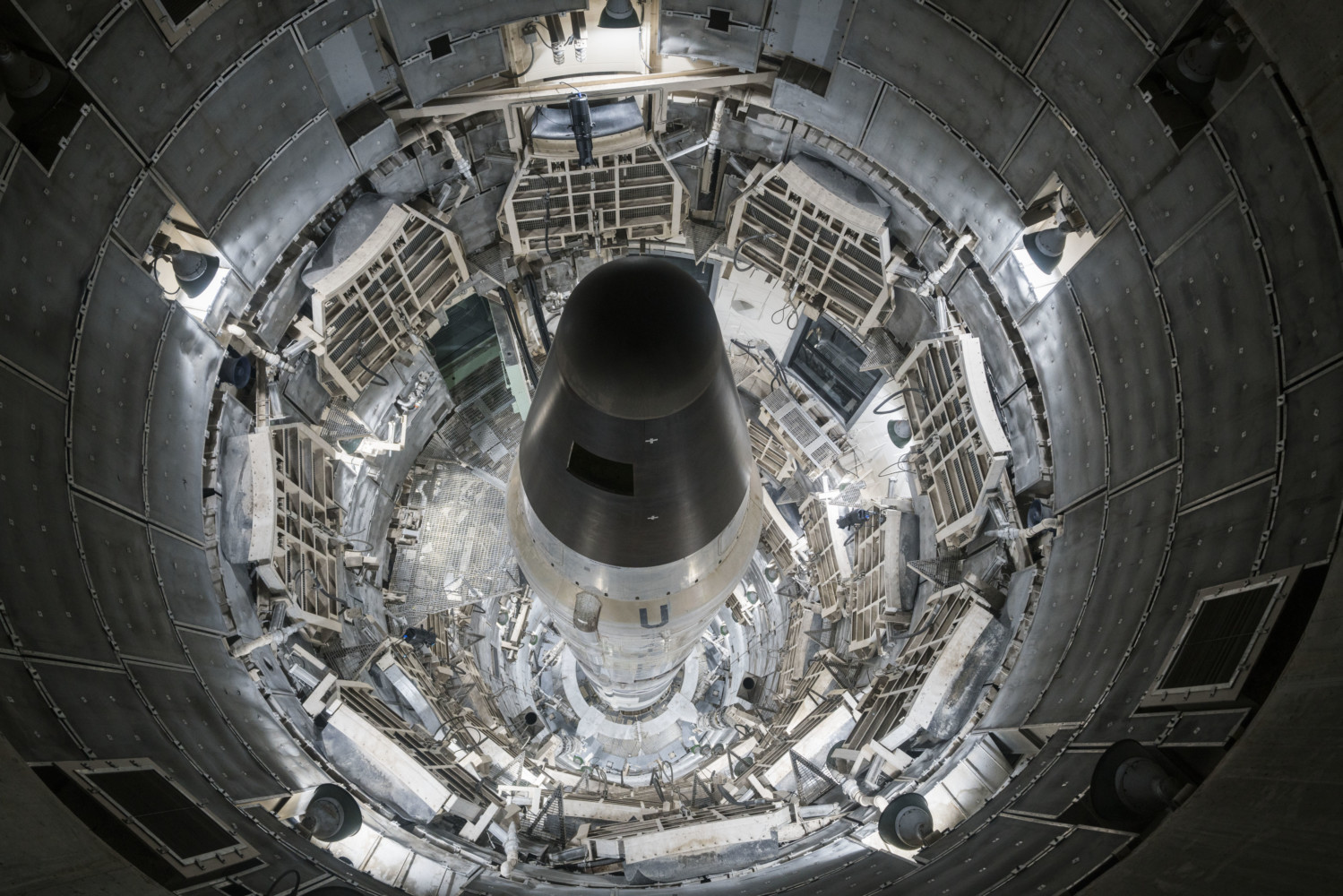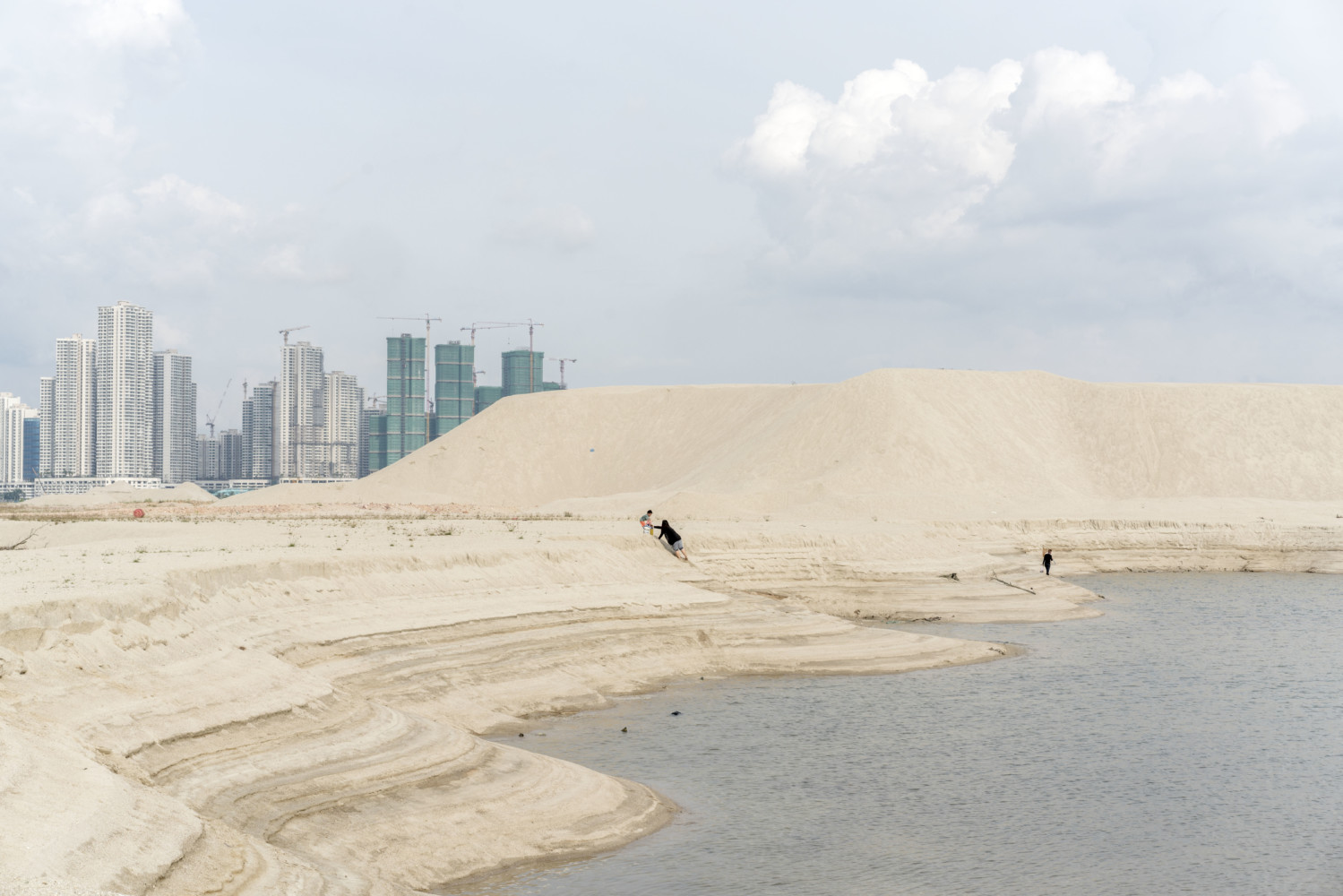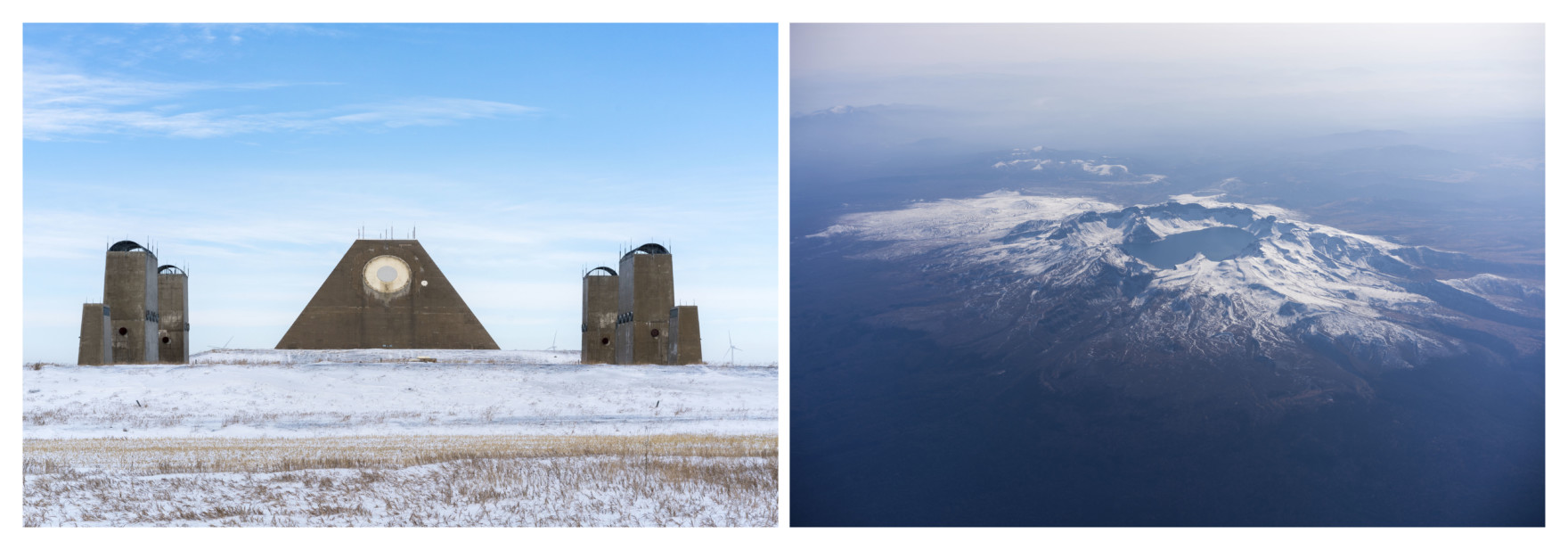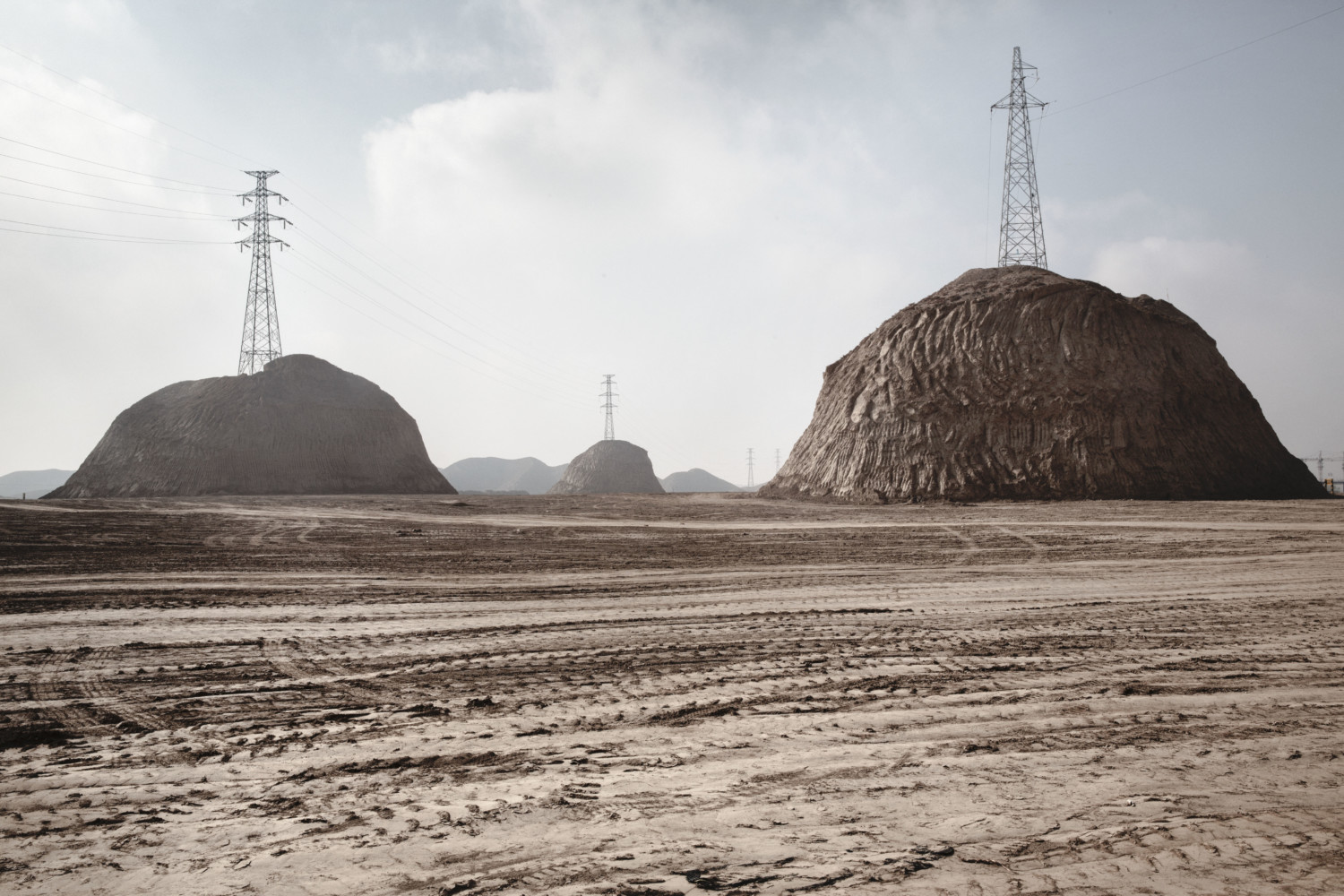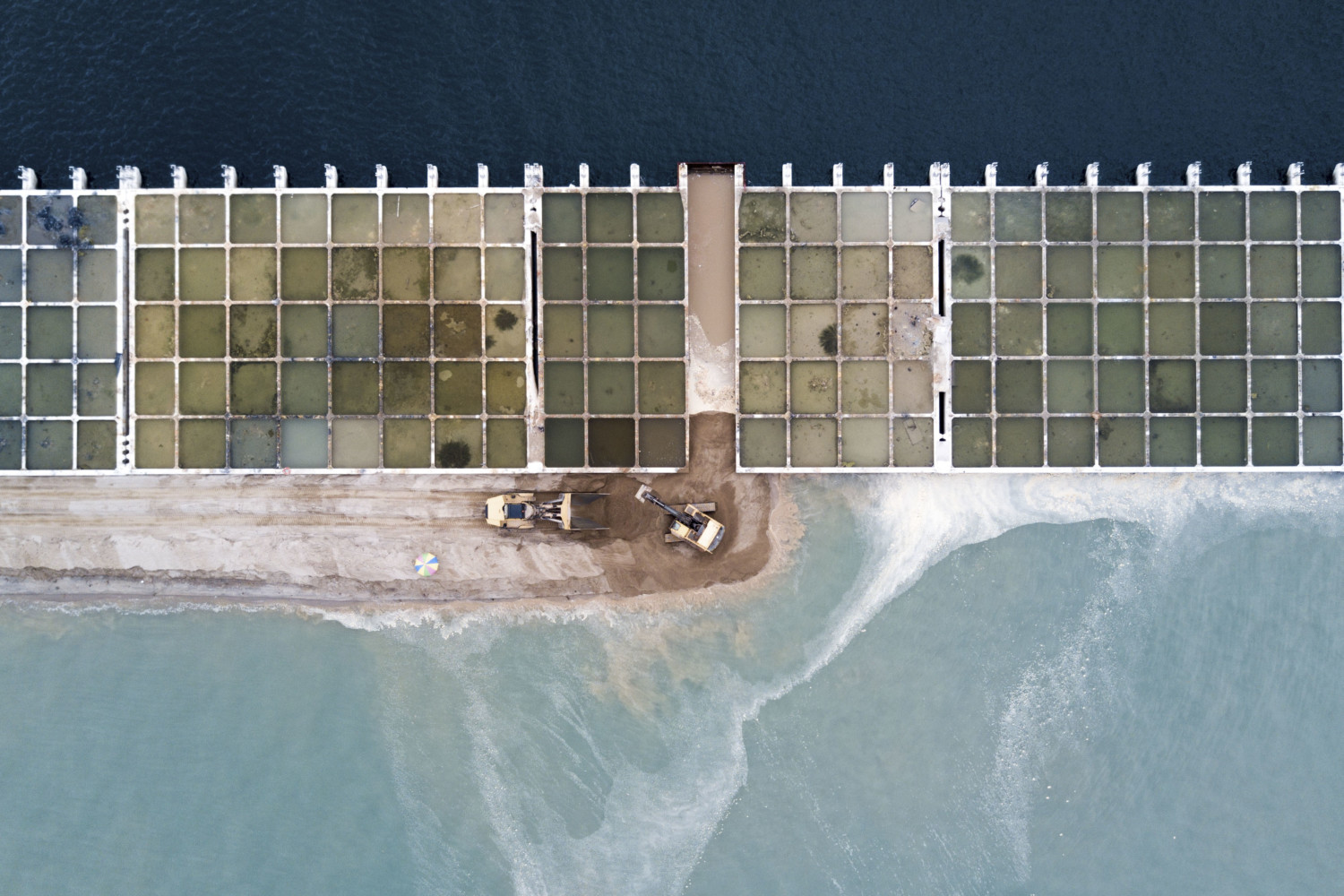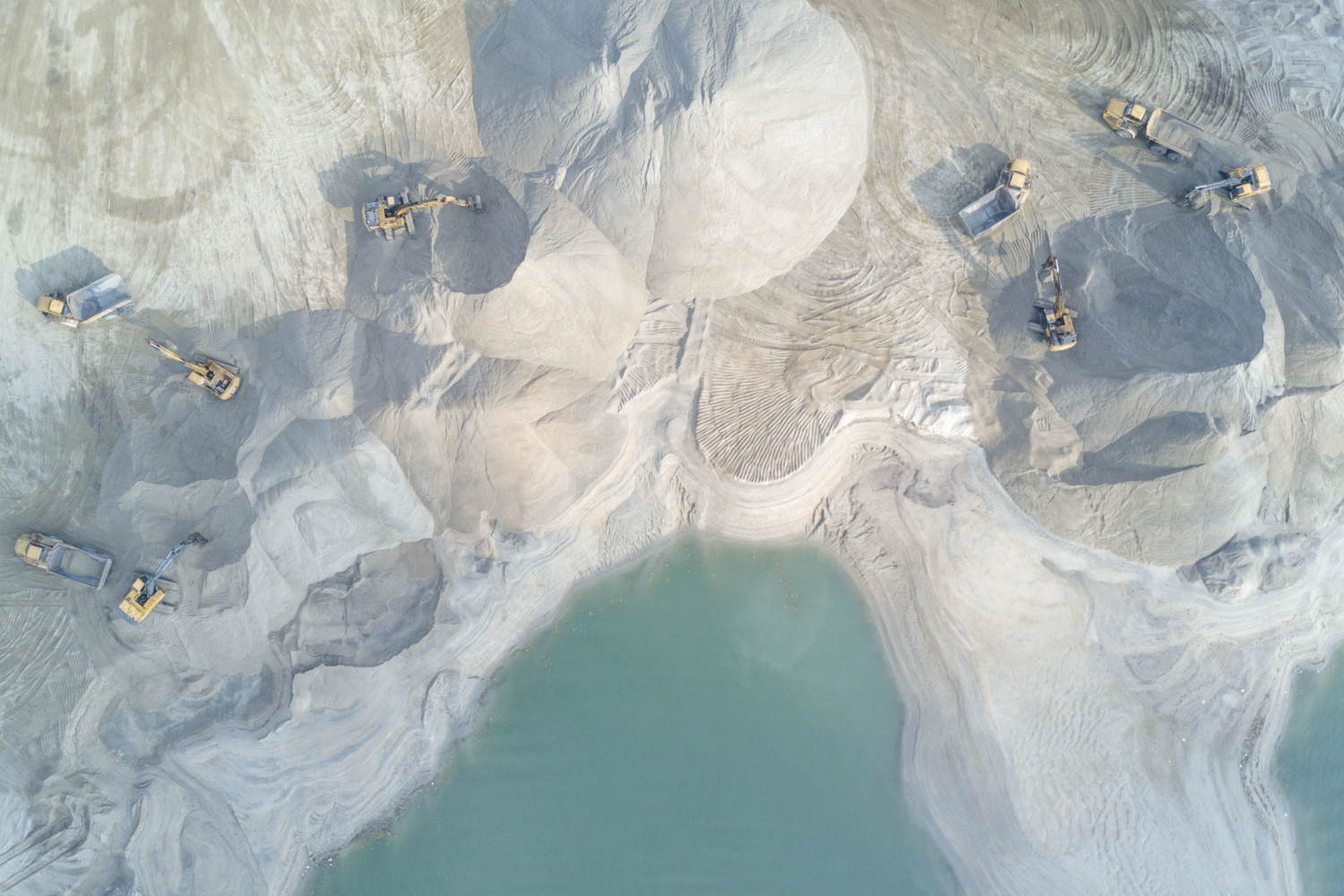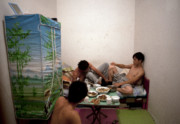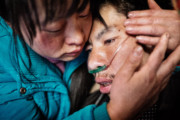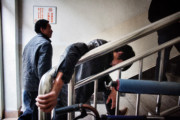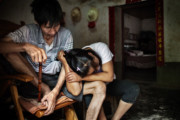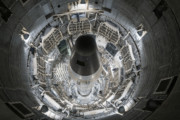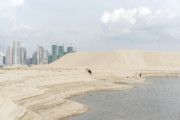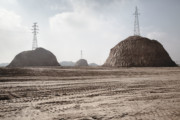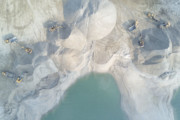Sim Chi Yin CHINA. Beijing. Aug. 24, 2011.
Twenty-two-year-old, Ren Liang, back to camera, eats a home-cooked dinner in his basement room with two friends visiting. Faced with sky-high property prices, living (...)
underground is often the only option for this legion of low-waged migrant workers, who make up one-third of Beijing’s estimated 20 million people. © Sim Chi Yin | Magnum Photos
Sim Chi Yin Master Yan, middle, and his students, Song Zhifei, right, and Li Guoqiang, left, practice the Chinese martial art of Wushu in his basement training room in west Beijing. Mr. Yan, who declined to gi (...)
ve his full name, operates the air-raid shelter basement with 130 rooms for rent alongside pursuing his dream of spreading the practice of Wushu and Tai Chi. Faced with sky-high property prices, living underground is often the only option for this legion of low-waged migrant workers, who make up one-third of Beijing’s estimated 20 million people. Beijing. China. Feb. 28, 2011. © Sim Chi Yin | Magnum Photos
Sim Chi Yin CHINA. 2012. Ever since former gold miner He Quangui, 41, became ill 10 years ago, his wife Mi Shixiu, 36, has had to take care of his every need and the family. When he is too sickly to walk, she (...)
carries him, even up flights of stairs. Mr He, who once weighed 65kg, is now barely 44kg. They have a very close relationship, and are "still like two teenagers who just fell in love", as a relative put it to me. They sing and horse around together, tease each other and banter. "I don't hope that he will be well enough to work again, but if he is just there every day when I get back, just to chat with me, I'm already very happy," says Madam Mi, who has been married to Mr He since she was 18.
---
Dying to breathe: former gold miner He Quangui is slowing dying of silicosis - a irreversible but preventable disease he contracted from years of working in small, unregulated gold mines in the Henan province, central China. Ten years after he was diagnosed with silicosis, he is fighting for his life, fighting to keep breathing. In this illness, a type of pneumoconiosis - China's most prevalent occupational disease afflicting millions - silica dust sucked into the lungs during years of blasting rock causes the miner's lungs to harden and eventually fail. Workers who can get good health care and remove themselves from the harmful environment -- particularly those who worked for state mines -- can live a normal person's lifespan. But most of the growing number of victims in China today are migrant workers like Mr He, with no insurance, good healthcare or legal recourse. They typically die in their 30s, leaving families with no sole breadwinners, wives with no husbands, children without fathers. © Sim Chi Yin | Magnum Photos
Sim Chi Yin Big Rain, 21, a KTV lounge worker, is seen in his basement room beneath Beijing’s north Third Ring Road. Originally from Heilongjiang in China’s northeast, he’s been in Beijing for the past year. F (...)
aced with sky-high property prices, living underground is often the only option for this legion of low-waged migrant workers, who make up one-third of Beijing’s estimated 20 million people. Beijing. China. May. 9, 2011. © Sim Chi Yin | Magnum Photos
Sim Chi Yin Jing Ranming, 18, cross-talk performer, actor, from Liaoning.
Jing Ranming: The Foreign Girlfriend and the Bentley
Jing Ranming is the stand-up comedian equivalent of a child athlete. Since he (...)
was eight, the 18-year-old has been groomed to excel at "cross-talk," a kind of Abbott-and-Costello jibe and counter-jibe that is especially famous in Beijing.
His family lives in China's northeast, and Jing came in 2011 to see if he could land work--to make it big. He's been in Beijing off and on since then, cutting costs by living below ground.
"I donít plan to stay in Beijing for long. Itís too depressing to live in Beijing.
Iím not depressed living underground, Iím more anxious when Iím outside, above ground. Beijing is so crowded! And so noisy and so polluted.
"Whatís my dream? My dream is to be huo, to be famous. Everyday after acting for a film, I will swipe my credit card and I will go home to my big villa, driving back in my 2 million rmb big Bentley, I will walk my Tibetan Mastiff dog, marry a foreign woman, a blonde pretty woman. In the winter, we will go to Sanya or Thailand, bask in the sun, come back to China in the summer. Our wedding will be grand, it will be on a beach. In my dreams this is how it is. I live in a basement now, I must dream this sort of dream!
"How to get there? Work hard. There is no other way." Beijing. China. Nov. 15, 2015. © Sim Chi Yin | Magnum Photos
Sim Chi Yin Mi Shixiu cradles He Quangui's head as he's struggling to breathe. He eventually recovers his breath. But in the wee hours of the next morning, he tried to kill himself to end the suffering.
---
(...)
Dying to breathe: former gold miner He Quangui is slowing dying of silicosis - a irreversible but preventable disease he contracted from years of working in small, unregulated gold mines in the Henan province, central China. Ten years after he was diagnosed with silicosis, he is fighting for his life, fighting to keep breathing. In this illness, a type of pneumoconiosis - China's most prevalent occupational disease afflicting millions - silica dust sucked into the lungs during years of blasting rock causes the miner's lungs to harden and eventually fail. Workers who can get good health care and remove themselves from the harmful environment -- particularly those who worked for state mines -- can live a normal person's lifespan. But most of the growing number of victims in China today are migrant workers like Mr He, with no insurance, good healthcare or legal recourse. They typically die in their 30s, leaving families with no sole breadwinners, wives with no husbands, children without fathers. China. 2013. © Sim Chi Yin | Magnum Photos
Sim Chi Yin Former gold miner He Quangui, who has incurable silicosis from years of blasting rock in illegal mines, once weighed 65kg and is now a skeletal 44kg. He sits on a stool while his wife Mi Shixiu hel (...)
ps to scrub him down. In the cooler months, he rarely takes showers because of the sheer effort of taking one. Mr He Quangui died 1 August 2015. Rest in peace. China. 2013.
---
Dying to breathe: former gold miner He Quangui is slowing dying of silicosis - a irreversible but preventable disease he contracted from years of working in small, unregulated gold mines in the Henan province, central China. Ten years after he was diagnosed with silicosis, he is fighting for his life, fighting to keep breathing. In this illness, a type of pneumoconiosis - China's most prevalent occupational disease afflicting millions - silica dust sucked into the lungs during years of blasting rock causes the miner's lungs to harden and eventually fail. Workers who can get good health care and remove themselves from the harmful environment -- particularly those who worked for state mines -- can live a normal person's lifespan. But most of the growing number of victims in China today are migrant workers like Mr He, with no insurance, good healthcare or legal recourse. They typically die in their 30s, leaving families with no sole breadwinners, wives with no husbands, children without fathers. © Sim Chi Yin | Magnum Photos
Sim Chi Yin CHINA. 2012. Arriving at a hospital seven hours' drive from his remote village in the mountains, former gold miner Mr He Quangui struggles at the foot of a flight of stairs to get to the room where (...)
he will be warded. He is almost totally out of breath. An air bubble had burst in his lung cavity, putting pressure on his lungs, the doctors told him. The doctor who received him took one look at the chest x-rays he brought with him and said "It's a miracle you made it here." He is eventually carried up the stairs in a wheelchair. © Sim Chi Yin | Magnum Photos
Sim Chi Yin CHINA. 2012. Four months after surgery on both lungs (in February 2012), Mr He Quangui, who has incurable silicosis from his years as a gold miner in small, illegal mines, and his wife Mi Shixiu ar (...)
e at home for the summer. She snuggles up to him. They have been married 19 years. He played the Chinese flute for pleasure while he still had some lung capacity. Born a farmer, Mr He is particularly fond of music; besides the flute he also plays the electric keyboard and the erhu, a Chinese string instrument. He and his wife also loved to sing, often doing duets. One of their favourite tunes is a rousing one on China's economic "reform and opening up" -- ironically the period during which Mr He like many other rural Chinese headed to towns and cities to participate in the country's phenomenal growth.
--
Dying to breathe: former gold miner He Quangui is slowing dying of silicosis - a irreversible but preventable disease he contracted from years of working in small, unregulated gold mines in the Henan province, central China. Ten years after he was diagnosed with silicosis, he is fighting for his life, fighting to keep breathing. In this illness, a type of pneumoconiosis - China's most prevalent occupational disease afflicting millions - silica dust sucked into the lungs during years of blasting rock causes the miner's lungs to harden and eventually fail. Workers who can get good health care and remove themselves from the harmful environment -- particularly those who worked for state mines -- can live a normal person's lifespan. But most of the growing number of victims in China today are migrant workers like Mr He, with no insurance, good healthcare or legal recourse. They typically die in their 30s, leaving families with no sole breadwinners, wives with no husbands, children without fathers. © Sim Chi Yin | Magnum Photos
Sim Chi Yin Left: A border guard in his sentry post on the China-North Korea border, close to a suspected North Korean missile base, October 2017. / As seen from the Chinese side, a guard inside a sentry borde (...)
r post in North Korea, along a stretch of the border close to where experts suspect is a missile base at Yongjo-ri, said to be about 20 km inland from the border with the Chinese city of Linjiang. / Right: Minuteman II Missile, South Dakota, United States, November 2017. / A Minuteman II Missile sits in the Delta 09 silo outside of the town of Wall in South Dakota, United States. This intercontinental ballistic missile (ICBM) could travel across 12,500 km and deliver its payload -- a nuclear warhead with a yield equivalent to 1.2 megatons of TNT -- in less than 30 minutes. It was in the US nuclear arsenal between 1965 and 1994. The Minuteman missiles were America's first solid fuel ICBMs. By 1965 there were 1,000 Minuteman ICBMs located in six different missile fields across the Central and Northern Great Plains region which were sparsely populated -- and hence might limit casualties in a nuclear war. The Great Plains were also the furthest area from both the Atlantic and Pacific coastlines, preventing them from being struck by Soviet submarine- launched ballistic missiles. From these locations, missiles could also be launched over the North Pole in order to strike targets in the central Soviet Union. A third generation of this missile, the Minuteman III, is the only ICBM still deployed by the United States. As of 2017, there are over 400 Minuteman III missiles on alert in North Dakota, Wyoming and Montana. © Sim Chi Yin | Magnum Photos
Sim Chi Yin Left: Hatches over silos which in the 1970s held missiles meant to shoot down incoming Soviet warheads, North Dakota, November 2017. / A missile field in rural North Dakota near the Canadian border (...)
which held Sprint and Spartan anti-ballistic missiles designed to intercept attacking nuclear warheads from Soviet missiles coming over the North Pole. These were deployed at the Stanley R. Mickelsen Safeguard Complex near Langdon, North Dakota, in the mid 1970s – a radar and anti-ballistic missile defence site which was shuttered by 1979.
Right:
The North Korean city of Hyesan, about 120km from North Korea's nuclear test site, October 2017. / The city of Hyesan in North Korea's Ryanggang province sits across the Yalu River from the Chinese border town of Changbai. Hyesan is 120 km from the Punggye-ri nuclear test site where North Korea is estimated to have conducted six underground nuclear tests since 2006. Japanese news reports in October (2017) said that a tunnel at the site had collapsed, killing as many as 200 North Koreans. Pyongyang's latest nuclear test, on September 3 (2017) recorded as a 6.3-magnitude earthquake in North Korea’s northeast. © Sim Chi Yin | Magnum Photos
Sim Chi Yin USA. November, 2017. A Titan II Missile in its silo at a former intercontinential ballistic missile site in Arizona. / A Titan II Missile in its silo at a former intercontinential ballistic missile (...)
site in Arizona, now the Titan Missile Museum. The Titan II was the largest and heaviest missile ever built by the United States. The missile was 31.3 m long and 3.05 m wide. It weighed 149,700 kg when fully fueled and had a range of 15,000 km. This is the last of 54 such missiles that were clustered in Arizona, Arkansas and Kansas during the Cold War; the rest have been destroyed. © Sim Chi Yin | Magnum Photos
Sim Chi Yin ‘Cuban Missile Crisis Matryoshka Dolls’. These artifacts were created by an unknown artist who painted important figures in the 1962 Cuban Missile Crisis onto traditional Matryoshka dolls. US Presi (...)
dent John F. Kennedy, Soviet leader Nikita Kruschev, Cuban leader Fidel Castro and Soviet Ambassador to the US Anatoly Dobrynin are featured alongside Soviet missiles, a U-2 spy plane, Soviet and American flags and the word ‘Peace’ in English, Russian and Spanish. The Cuban Missile Crisis was a 13-day standoff between the US and the USSR over the installation of nuclear-tipped Soviet missiles in Cuba that brought the two countries to the brink of nuclear war. Courtesy of the National Atomic Testing Museum, Las Vegas, Nevada. USA. 2017. © Sim Chi Yin | Magnum Photos
Sim Chi Yin A family takes a walk and goes fishing in an area in southern Malaysia now covered with giant sand dunes. The Danga Bay area is earmarked for a massive residency and commercial development, with mu (...)
ch of the land reclaimed. Mangroves nearby appear to have been drowned by sand. The world is running out of sand as Asia’s rapid urbanisation is driving up demand like never before. From "Shifting Sands", 2017- on-going. Malaysia, 2017. © Sim Chi Yin | Magnum Photos
Sim Chi Yin Left: The pyramid-shaped Missile Site Control Building stands in the middle of the Stanley R Mickelsen SAFEGUARD Complex. This anti-ballistic missile defense site -- the only one of its kind to be (...)
built in the US -- was designed to detect and intercept attacking nuclear warheads from Soviet missiles coming over the North Pole. Nuclear-tipped Sprint and Spartan anti-ballistic missiles were deployed at the site to shoot down the incoming Soviet missiles. The facility, built in the early to mid 1970s at a cost of US$5.7 billion, near Langdon, North Dakota, was fully operational for only a day in October 1975 before Congress voted to shut it down. At the time, it was one of the most advanced radar systems and had among the most powerful computers in the world. With its deterrent effect, it is seen as having been a bargaining chip for the US in the SALT treaties.
Right: Looking from China into North Korea over Mount Paektu, elevation 2,744 m, an active volcano on the border of the two countries. The mountain and the crater lake formed by a volcanic eruption are divided between North Korea and China. The highest mountain on the Korean peninsula and northeast China, it is regarded by North and South Koreans as a sacred place that is their countries’ spiritual home. Imagery of this mountain features in many North Korean propaganda paintings. October 28, 2017 © Sim Chi Yin | Magnum Photos
Sim Chi Yin CHINA. Gansu. 2013. From "Shifting Sands".
Mounds of sand and earth with electric pylons in them are left after much building material was dug up and moved from this patch in the Lanzhou New Are (...)
a in Gansu, western China, an entirely new city being carved out of the desert, flattening mountains and bulldozing villages. © Sim Chi Yin | Magnum Photos
Sim Chi Yin From "Shifting Sands", 2017 - on-going. Land reclamation works are on-going at this area of Tuas, Singapore's westernmost area where a new massive container port -- the world's largest in the next (...)
30 years -- is being built. The port authority is using materials dredged from the nearby seabed and earth excavated from tunnelling work on a subway line to cut use of sand by about 70 per cent in the building of this pier -- which will be one of four eventually. Singapore has been short of sand for its sizeable and continual land reclamation and construction work, having bought sand from its neighbouring Southeast Asian countries for decades. Tuas. Singapore. 2017. © Sim Chi Yin | Magnum Photos
Sim Chi Yin MALAYSIA. Johor. 2017. From "Shifting Sands", 2017 - on-going.
Tractors plough through piles of sand which have been deposited by sand barges at the Forest City development — a joint venture bet (...)
ween a China developer with the state government and Sultan of Johor. The ambitious project plans to make four artificial islands out of the sea. One has so far been made, with a hotel, residential and commercial complex built on it. It is sold as a development that is green and a model of future urban planning, but has displaced aboriginals and disrupted traditional fishing grounds and eco life. © Sim Chi Yin | Magnum Photos
